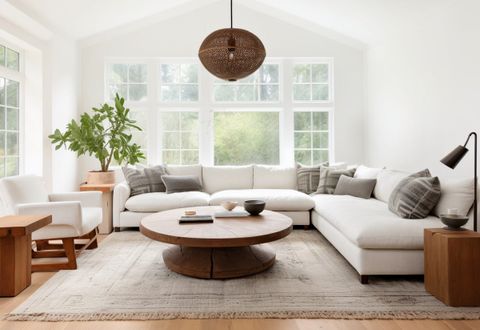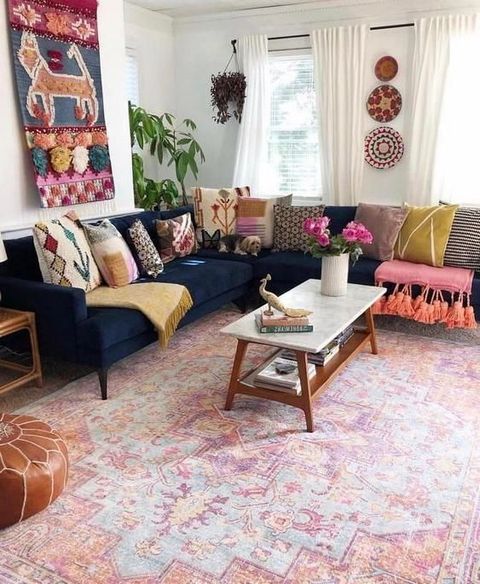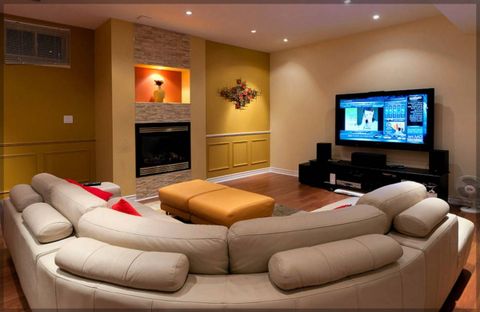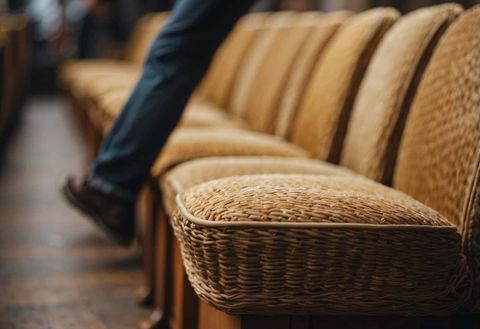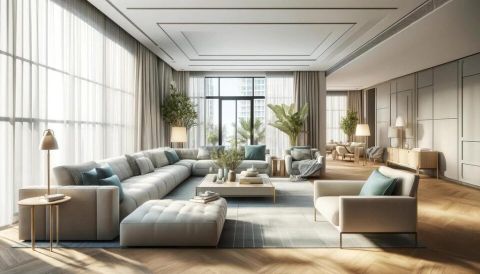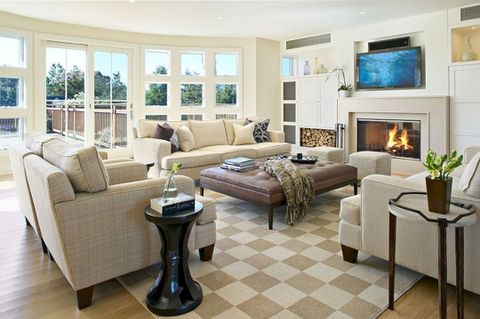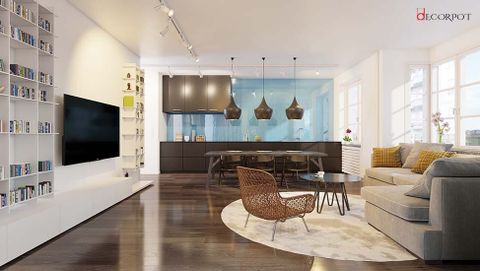Ever walked into a room and just felt… right? Like every piece of furniture was placed with intention, beckoning you to sink in and relax. That feeling, that sense of sanctuary, often starts with the seating. It’s not just about having a place to sit; it’s about creating an experience, a haven where everyday comfort meets personal style. This journey into thoughtful seating is more than just picking out a sofa. it’s about understanding how each chair, each bench, contributes to the overall feeling and function of your most intimate space: your home.
Think about it. Where do you start your day with a cup of coffee. where do you unwind after a long day, where do you gather with loved ones for laughter and conversation? More often than not, it’s on a chair, a sofa, or a cozy armchair. Seating is the silent workhorse of our homes, serving multiple purposes from practical functionality to providing a sense of warmth and belonging. But how do we move beyond just ‘filling a space’ to truly designing a sanctuary? It involves a deep dive into not just what looks good, but what feels good, what supports our bodies, and what genuinely enhances our daily lives. This isn’t just interior design, it’s lifestyle design.
Understanding Your Lifestyle and Needs: The Foundation of Choice
Before you even think about fabrics or frames, the very first step in choosing thoughtful seating is to really, truly understand your own lifestyle and the needs of your household. Are you a busy family with kids and pets who need durable, easy-to-clean options. Or are you a single person who values quiet contemplation and luxurious comfort? Do you entertain often, requiring ample seating for guests, or is your home more of a private retreat?
Consider these questions:
- Who uses the space? Adults, children, pets, frequent guests?
- What activities happen here? Reading, watching TV, working, dining, socializing, napping?
- How much space do you have? Measure, measure, measure! Don’t forget doorways and hallways for delivery.
- What’s your preferred comfort level? Do you like firm support, or do you prefer to sink into something plush?
For example, a family with young children might prioritize a sectional sofa with performance fabric – something that can withstand spills and wear and tear – rather than a delicate velvet armchair. Conversely, a quiet reading nook might call for a deep, soft club chair with an accompanying ottoman. It’s all about aligning your choices with your reality, not just an image you saw in a magazine.
The Ergonomics of Everyday Comfort: Sitting Smarter, Not Just Softer
This is where my expertise really shines, and it’s often overlooked. ‘Comfort’ isn’t just about softness; it’s about support and proper body alignment. Ergonomics, simply put, is the science of designing and arranging things people use so that the people and things interact most efficiently and safely. For seating, this means considering things like seat depth, seat height, backrest support, and armrest placement.
- Seat Depth: If a seat is too deep, your feet might dangle, or you’ll slouch. If it’s too shallow, you won’t feel fully supported. A good rule of thumb is that your feet should be flat on the floor with your knees at a 90-degree angle when seated all the way back.
- Seat Height: Similar to depth, proper height ensures your feet are grounded and your hips are aligned. This is especially important for dining chairs and desk chairs.
- Backrest Support: Look for good lumbar support. Some sofas and chairs have adjustable backrests or removable cushions that allow for customization.
- Armrests: These should be at a height that allows your arms to rest naturally without shrugging your shoulders. They’re not just for looks; they provide support when getting up and sitting down.
Many people buy a beautiful couch only to find it uncomfortable after a short period. This is often due to poor ergonomic design. Don’t be afraid to sit, recline, and really test out a piece of furniture before you commit. It’s an investment in your daily well-being.
Material Matters: Fabric, Durability, and Maintenance
The material of your seating isn’t just about aesthetics; it’s a huge factor in durability, comfort, and how much effort you’ll need to put into maintaining it. There’s a vast world beyond basic cotton and leather, and understanding these options is key to making a thoughtful choice.
- Natural Fibers (Cotton, Linen, Wool): These are breathable and often soft, but can be prone to wrinkling, staining, and fading. Linen has a beautiful, relaxed look but can be high-maintenance. Wool is durable and resistant to pilling, but can be expensive.
- Synthetics (Polyester, Nylon, Acrylic, Olefin): These are engineered for durability, stain resistance, and often fade resistance. Performance fabrics, a popular category within synthetics, are designed to withstand heavy use, spills, and even pet claws. They’re excellent for high-traffic areas or homes with children and pets.
- Leather: A classic choice, leather is durable, develops a beautiful patina over time, and is relatively easy to clean (just wipe spills). However, it can be expensive, and its feel can vary from soft and supple to firm and cool.
- Velvet/Chenille: These offer a luxurious feel and appearance but can be more delicate and show wear more easily, especially velvet. They might require more careful cleaning.
Always consider the use case. A formal living room chair might be fine with a delicate silk blend, but a family room sofa needs something robust. Ask about the fabric’s rub count (a measure of durability) and its cleaning instructions. A little research here can save you a lot of headache down the line.
Aesthetics and Flow: Integrating Seating into Your Design Vision
Once the practicalities are sorted, then comes the fun part: integrating your chosen seating into the overall aesthetic of your home. Seating isn’t just functional; it’s a major design element that contributes to the mood, style, and flow of a room.
- Scale and Proportion: This is critical. A huge sectional in a tiny room will overwhelm it, just as a tiny armchair in a vast open-plan space will look lost. Measure your room and consider the visual weight of the furniture. Don’t forget vertical space – a low-slung sofa will feel very different from one with a high back.
- Style Cohesion: Do you prefer modern, traditional, bohemian, minimalist, or something eclectic. Your seating should ideally complement your existing decor or set the tone for a new design direction. Mix and match thoughtfully; an antique armchair can look stunning next to a contemporary sofa if done with intention.
- Color and Texture: These elements are powerful. A vibrant sofa can be a focal point, while a neutral one provides a calm backdrop. Varying textures (a smooth leather sofa with fuzzy throw pillows, for example) adds depth and interest to a space.
- Arrangement and Flow: How will people move around the seating? Ensure there’s enough space for walkways and that the arrangement encourages conversation and comfort. Think about sightlines to the TV, fireplace, or windows. Creating zones within a larger room using seating arrangements is a smart move.
Remember, your home is a reflection of you. Don’t be afraid to let your personality shine through your choices, even if it means breaking a ‘rule’ or two. It’s your sanctuary, after all.
Beyond the Sofa: Diverse Seating for Diverse Needs
While the sofa often takes center stage, thoughtful seating extends far beyond it. Incorporating a variety of seating options adds versatility, visual interest, and caters to different needs and moods within a single space.
- Armchairs and Accent Chairs: These are fantastic for adding a pop of color, a different texture, or a unique design element. They’re perfect for creating a reading nook, providing extra seating for guests, or simply filling an empty corner with style.
- Ottomans and Poufs: Extremely versatile! An ottoman can serve as a footrest, extra seating, or even a coffee table (with a tray). Poufs are lightweight and easily moved, great for casual seating for kids or a quick spot for an adult.
- Benches and Banquettes: Excellent for dining areas, entryways, or even at the foot of a bed. They can save space and often provide hidden storage. A built-in banquette can be incredibly cozy and efficient.
- Dining Chairs: Often overlooked in the ‘comfort’ discussion, but crucial for mealtime enjoyment. Consider the height relative to your table, the back support, and the material (easy to clean for dining!).
- Desk Chairs: If you work from home, this is possibly the most important piece of seating you’ll own. Invest in an ergonomic, supportive desk chair. Your back will thank you.
Don’t limit yourself to a ‘set’ of furniture. Mixing and matching different types of seating, even from different eras or styles, can create a much more curated and personal feel than a perfectly matched living room suite. This disorganization can be a good thing, a sign of a lived-in, loved space.
Practical Tips for Choosing and Maintaining Your Seating
Making the right choice is just the beginning. Here are some practical tips to ensure your thoughtful seating choices bring you joy and comfort for years to come.
- Test, Test, Test: I cannot stress this enough. Sit on the furniture. Recline. Lean back. Pretend to read a book or watch TV. If buying online, read reviews diligently and check return policies.
- Check Construction: Look for solid wood frames (hardwood is best), sturdy joinery (dovetail or mortise-and-tenon are strong), and quality springs (eight-way hand-tied is considered top-tier, but sinuous springs are also good and more affordable).
- Consider Fill Materials: Foam density affects firmness and longevity. High-density foam lasts longer. Down or feather fill is softer but requires more fluffing. A combination of foam and down is often a good compromise.
- Measure Everything: Not just the room. Measure doorways, stairwells, and any tight turns in your home to ensure delivery is possible.
- Read Warranties: Understand what’s covered and for how long. It’s a sign of a manufacturer’s confidence in their product.
- Maintenance Matters: Follow cleaning instructions for your specific fabric or leather. Rotate and fluff cushions regularly to ensure even wear and maintain their shape. Promptly clean spills.
By being a bit more informed and taking the time to consider these aspects, you’re not just buying furniture; you’re investing in the very fabric of your home’s comfort and your daily well-being. It’s a small but significant step in designing a sanctuary that truly serves you.
Designing your sanctuary through thoughtful seating choices is an art and a science. It’s about blending the practical with the beautiful, understanding how our bodies interact with our environment, and creating spaces that truly nurture us. From the foundational understanding of your lifestyle to the nuanced details of ergonomics, materials, and aesthetics, every decision contributes to the overall feeling of your home. It’s not about achieving perfection, rather it’s about creating a living space that feels authentic, comfortable, and uniquely yours. Embrace the process, trust your instincts, and soon you’ll be sinking into a haven of comfort, knowing every seat was chosen with intention and care. Your home isn’t just a place; it’s a feeling, and with the right seating, it can be the most comforting feeling of all.


